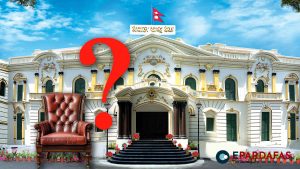
The first governor of the country and former finance secretary Rana passed away
Himalaya Shamser Rana, who is considered to be the pioneer of modernization of economic institutions of Nepal, the first governor, the first finance secretary, the promoter of Nepali currency and the founder of Himalayan Bank, passed away on Sunday morning at the age of 95.
Himalaya Shamsher Janga Bahadur Rana is a banker of Nepal and the first governor of Nepal Rastra Bank. He was the Governor of Nepal Rastra Bank from April 26, 1956, to February 7, 1961. He later opened a bank named Himalayan Bank Limited which is counted among the banks of Nepal.
Himalaya Shamsher Rana is the grandson of Prime Minister Shri 3 Dev Shamsher. That is why he was born with the title of Colonel. He was also in the process of becoming the Prime Minister of the country.
Finance Secretary Himalaya Shamsher Rana said that the finance minister chose him as the secretary on the basis of his good work after working for a few days with three MA graduates including himself. He was the first finance secretary of the country for 5 years after the year 2007 and played an active role in establishing the Ministry of Finance and new agencies under that ministry.
After that, he was appointed as the first governor of Nepal Rastra Bank and got the opportunity to establish the bank. Apart from that, some new bodies and institutes were established.
However, he was recognized as the former governor of Nepal Rastra Bank. Recognizing that Rastra Bank should provide the right advice to the Government of Nepal while performing its duties as an economic adviser, he has put the slogan ‘Asatoma Sad Gamay’ on the seal of this institution. The design of the print was done by artist Jwala, daughter of Balkrishna Sama.
During his tenure of 4 years and 8 months, he managed to complete some programs that had a far-reaching impact on the country. Since then, he succeeded in establishing the Nepali rupee as a currency in the Terai region of Nepal, where Indian rupees were traded. They began to experience that the Tarai Madhesh is an integral part of the economy of the Country of Nepal.
At that time, the main purpose of establishing Nepal Rastra Bank was that one currency should be in circulation in a country. In 2013 BS, dual currency was in circulation in Nepal.
Nepali rupee was in circulation in Kathmandu valley and hills, Indian currency was in circulation in Terai and interior Madhesh from Jhapa to Kanchanpur. It was the government that brought the Indian rupee into circulation. It was used to raise goods, it was used to spend.
After the establishment of Nepal Rastra Bank, accounts were opened everywhere from the Bank of England. And, the British started coming to the National Bank to exchange pounds for the Gorkhalis’ pension. Even in foreign regulations, Nepal became independent. Nepal was able to spend by itself from its earnings.
For 20-25 years after the establishment of the Nepal RastraBank, there was no work to regulate and monitor the banks. It took 5 years to figure out how to use the Nepali currency, after which foreign regulations were worked on. Then there was the issue of note issuance.
During the time of Judda Shamsher, Nepali notes were issued, at that time there was no provision to keep security while issuing paper currency. After the establishment of Rastra Bank, the security of note issuance was arranged. That means the government used to set a limit to issue notes. Laws were made to keep 50 percent of gold and silver. There was no system to exchange the notes if they were torn or lost after issuing the notes. It was also arranged by Himalaya Shamser.
King Mahendra dissolved the parliament and took power. King Mahendra deposed all those who believed in multi-party system. Himalaya Shamser also fell in that ouster.
He has two sons Ashok and Amar and two daughters Pratima Pandey Rana and Sangita Thapa. Ashok Rana is currently the Chief Executive Officer of Himalayan Bank Limited. He is established as a good banker.













Comments